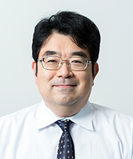Speakers
Keynote Speaker I

Takao Mori, Research Center for Materials Nanoarchitectonics (MANA), National Institute for Materials Science (NIMS), Japan
Biography: Takao Mori received his PhD at the University of Tokyo, Dept. of Physics. He is a Field Director at the National Institute for Materials Science (NIMS) in Japan. He is also a Professor of the University of Tsukuba, Graduate School, and elected Board Member of the International Thermoelectric Society (ITS), elected President of ITS from July 2023. Mori’s research interests are, broadly speaking, to find ways to control structures and properties of inorganic materials. He is especially involved now in development of thermoelectric materials and multidisciplinary enhancement principles, such as utilizing magnetism, in order to find new routes to achieve high control over band structures and electrical and thermal transport. Mori is a Senior Editor of Materials Today Physics and Associate Editor of Materials for Renewable and Sustainable Energy, an Editorial or Advisory Board Member of Journal of Solid State Chemistry, Advances in Applied Ceramics, Journal of Materiomics, Joule. He is a Program Manager of Japan Science and Technology Agency (JST) Mirai Large-scale Program. Mori has published over 350 journal papers, 25 book chapters, and 35 patents.
Keynote Speaker II

Prof. Mark James-Jackson, Executive Kansas State University, USA
Doctor Mark James Jackson is the McCune and Middlekauff Professor, Graduate Faculty and University Faculty Fellow at Kansas State University. Born in Widnes, Lancashire, England, in 1967, Doctor Jackson began his engineering career in 1983 when he studied O.N.C. part I examinations and first-year apprenticeship-training course in mechanical engineering. Dr. Jackson was appointed member of the United Nations Education, Scientific and Cultural Organization’s (UNESCO) International Commission for the Development of the ‘Encyclopedia of Life Support Systems’ Theme on ‘Nanoscience and Nanotechnologies’, (http://m-press.ru/English/nano/index.html), and still serves in this capacity. He is a Stanford University classified professor (Top 2% World Scientist) focusing on the development of aerospace and space education, engineering and physics, aerospace business/economics/commercialization, business education + data science and policy studies at Kansas State University. Dr. Jackson is also a technical and management consultant associated with Luke & Spencer, Lucas Engineering & Systems, Polytech Consultants, HCH Consultants, BA Group, MIJA (University of Cambridge), Vitrified Technologies, ICI, Leyland Bus, British Rail Engineering, Saint-Gobain, NIST Technical Assistance Program and the British Technology Group. He has been involved in product design and business process systems development for Rolls-Royce, British Aerospace, Dowty, Callendar Aerospace, Lucas Aerospace, GKN-Hardy Spicer, Lucas/TRW/Borg Warner Diesel Systems, Gleason, Slack and Parr, Ford, GM, GE, Audi, VW, BMW, Fiat, SKF Dormer, Cleveland Twist Drill, Manganese Bronze, Weyburn Bartel, British Steel, Volvo, Scania, Cosworth Racing, Ilmor Engineering. Dr. Jackson is a volunteer project evaluator for the US Space Force, US Air Force Research Laboratory, Space Frontier Foundation, NASA Marshall Space Flight Center and the Space Science Institute.
Keynote Speaker III

Prof. Laichang Zhang, Edith Cowan University, Australia
Lai-Chang Zhang is a Professor of Materials Engineering and the Program Leader–Mechanical Engineering in the School of Engineering at Edith Cowan University (Perth, Australia). After awarded his PhD in Materials Science and Engineering at the Institute of Metal Research, Chinese Academy of Sciences, Prof. Zhang held several positions at The University of Western Australian, University of Wollongong, IFW Dresden and Technische Universität Darmstadt. His research interests include metal additive manufacturing, light-weight alloys, nanocrystalline materials and metallic glasses, and nanomaterials for water treatment. He has published more than about 300+ referred journal papers with an H-index of 69 and 15000+ citations and 26 ESI Highly Cited Papers. He also served as Editor or Editorial Board Members many journals, e.g. Advanced Engineering Materials, Materials Science and Technology, Scientific Reports, Acta Metallurgica Sinica (English Letters), Transactions of Nonferrous Metals Society of China, etc.
